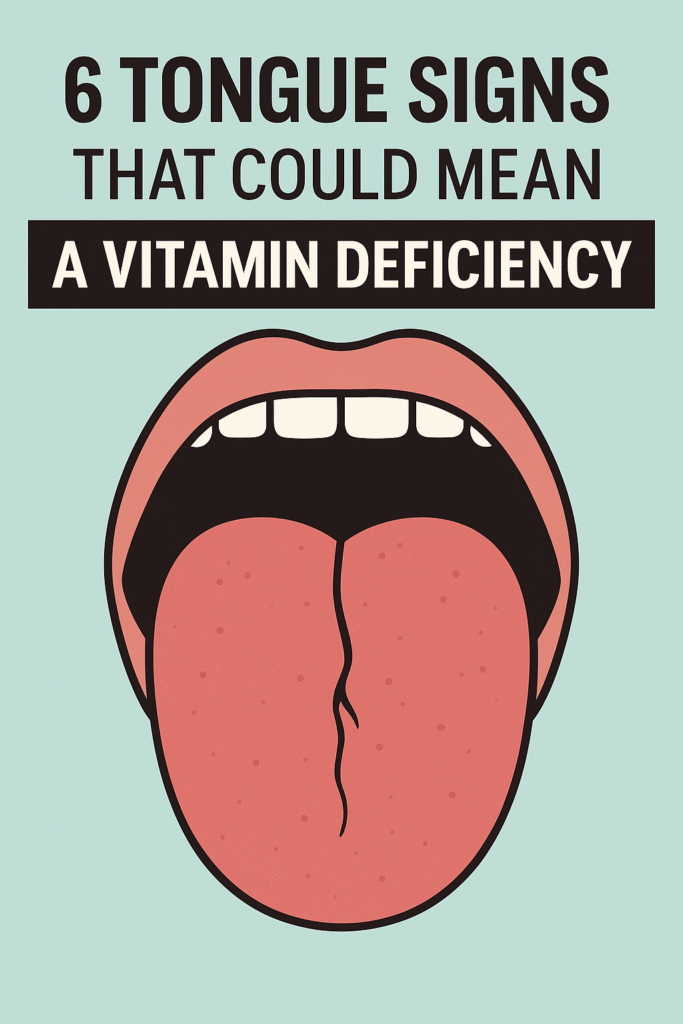
⚠️ Affiliate Disclaimer: This post may contain affiliate links, which means I may earn a small commission — at no extra cost to you — if you make a purchase through one of these links. I only recommend products or services I genuinely trust and believe can provide value. Thank you for supporting My Medical Muse!
Migraines in Women: 10 Powerful Reasons They’re 3x More Common Than Men
Migraines in Women: Why They’re 3x More Common Than in Men
Migraines are far more than “just bad headaches.” They are a neurological disorder capable of disrupting daily life, often accompanied by nausea, sensitivity to light or sound, and even temporary vision or speech disturbances. For many women, a migraine attack means being unable to work, care for their families, or participate in normal activities for hours or even days.
Globally, migraines affect over 1 billion people, making them one of the most common and disabling health conditions. Yet the burden is not distributed equally, women are three times more likely than men to experience migraines. This disparity is one of the most striking gender differences in medicine, and it raises an important question, why?
The answer is multifaceted. Fluctuating hormones, inherited genetic factors, unique aspects of brain chemistry, lifestyle pressures, and even societal expectations around women’s roles all contribute to this imbalance. Together, they create a perfect storm that makes women more vulnerable not only to experiencing migraines but also to experiencing them more frequently and severely.
In the sections that follow, we’ll explore the science behind this gender gap:
- How hormones shape migraine risk throughout a woman’s life.
- The triggers that disproportionately affect women.
- Why migraines are often underdiagnosed or misunderstood in women.
- The latest treatments and strategies for managing them.
By understanding these dynamics, women can be better equipped to anticipate attacks, healthcare providers can deliver more tailored treatment, and society as a whole can reduce the stigma surrounding a condition that impacts millions of women every day.
What Are Migraines?
Before exploring why migraines are more common in women, it’s important to first understand what migraines actually are.
Beyond a Headache
A migraine is not simply a severe headache, it is a complex neurological disorder involving changes in brain activity that affect nerve signaling, chemical balance, and blood vessel function. This disruption can trigger a cascade of symptoms that extend far beyond head pain.
Typical migraine attacks can:
- Last anywhere from 4 to 72 hours, if untreated.
- Cause intense throbbing or pulsating pain, usually on one side of the head, though sometimes on both.
- Be accompanied by nausea, vomiting, dizziness, blurred vision, and extreme sensitivity to light, sound, or even smells.
These symptoms make migraines one of the leading causes of disability worldwide, often preventing people from working, studying, or performing daily activities.
The Four Phases of a Migraine
Migraines are not random, one-off events. They often unfold in distinct stages, though not everyone experiences all of them:
- Prodrome (early warning signs): Subtle changes such as mood swings, food cravings, neck stiffness, or unusual fatigue can appear hours or even days before the headache begins.
- Aura (neurological disturbances): About one in three migraine sufferers experience aura. These symptoms may include flashing lights, zigzag lines, blind spots, or tingling sensations in the face or hands. Aura usually develops gradually and lasts less than an hour.
- Headache phase: This is the most recognizable stage, marked by severe, pulsating head pain that often worsens with physical activity. Many also experience nausea, vomiting, and heightened sensitivity to sensory input.
- Postdrome (“migraine hangover”): Once the pain subsides, lingering effects can last up to 24 hours. Fatigue, brain fog, irritability, and difficulty concentrating are common, leaving many women drained even after the headache ends.
The Gender Gap: Why Women Suffer More Migraines
One of the most consistent findings in migraine research is the 3:1 ratio of women to men. In other words, women are three times more likely to live with migraines. This isn’t a coincidence, it’s the result of biological, genetic, and social factors working together.
Hormones: The Leading Factor
The most powerful influence comes from female sex hormones, especially estrogen. Estrogen regulates neurotransmitters like serotonin and dopamine, both of which are deeply involved in migraine pathways. It’s not simply high or low levels of estrogen that matter,rather, it’s the fluctuations that trigger attacks.
- Puberty: Before puberty, migraine rates are roughly equal in boys and girls. Once girls enter adolescence and estrogen begins to rise, migraine prevalence climbs dramatically in females.
- Menstrual cycle: Around 60% of women with migraines experience attacks tied to their periods. These are called menstrual migraines and typically strike in the days just before or during menstruation, when estrogen levels drop suddenly.
- Pregnancy: During pregnancy, especially in the second and third trimesters, hormones remain relatively stable, and many women experience fewer migraines. However, attacks often rebound after childbirth, when hormones shift sharply again.
- Menopause: Some women find their migraines ease after menopause, when estrogen stabilizes at a lower level. Others, especially during the perimenopausal years when hormone levels fluctuate unpredictably, experience worsening symptoms.
Genetics: A Strong Inheritance Pattern
Migraines tend to run in families, and research shows a stronger maternal link. Specific genetic variations have been identified that increase migraine risk, and these may interact with female hormonal pathways compounding the likelihood that women will develop migraines if their mothers or grandmothers had them.
Brain Structure and Chemistry
Neuroimaging studies reveal that women’s brains process pain differently from men’s. Women show more activity in pain-related regions, and their serotonin levels fluctuate in tandem with estrogen. This combination may explain why women not only experience migraines more often but also often report more severe and longer-lasting attacks.
Triggers Unique to Women
Men and women share many common migraine triggers, such as stress, lack of sleep, dehydration, certain foods, alcohol, or weather changes. However, women face additional gender-specific triggers tied directly to hormones and reproductive health:
- Menstrual cycle fluctuations (especially the drop in estrogen before a period)
- Hormonal contraceptives (pills, patches, or hormonal IUDs, which can either improve or worsen migraines depending on the formulation)
- Pregnancy and postpartum changes
- Perimenopause and menopause
- Fertility treatments or hormone replacement therapy (HRT)
On top of biological factors, women often juggle multiple societal roles career, caregiving, household responsibilities, which can heighten stress and sleep disruption. These lifestyle stressors, layered on top of hormonal fluctuations, create a unique and often heavier migraine burden for women compared to men.
Migraine and Women’s Life Stages
Migraines in women don’t occur in isolation, they evolve with hormonal shifts throughout life. Each stage of a woman’s reproductive journey brings unique challenges that can either worsen or ease migraine symptoms.
Childhood and Adolescence
In childhood, migraine risk is nearly identical for boys and girls. However, things change dramatically with the onset of puberty, as estrogen levels begin to rise, girls experience a sharp increase in migraine prevalence compared to boys. This is often the first sign of the strong connection between hormones and migraine risk.
Reproductive Years
During the reproductive years, many women experience menstrual migraines, which occur around the time of their period due to the natural drop in estrogen. These migraines are typically more severe, harder to treat, and longer-lasting than non-menstrual attacks.
Hormonal contraceptives also play a role:
- For some women, birth control pills or hormonal IUDs stabilize estrogen levels and reduce migraine frequency.
- For others, the same contraceptives can worsen migraines, especially if they contain high doses of estrogen or trigger hormone fluctuations.
This makes personalized medical guidance essential when choosing contraception.
Pregnancy
Pregnancy often brings significant changes to migraine patterns:
- During the second and third trimesters, up to 70% of women report fewer migraine attacks thanks to stable and elevated estrogen levels.
- However, in the first trimester, migraines may worsen, partly due to rapid hormonal shifts, sleep disruption, and morning sickness.
- After childbirth, when hormone levels drop suddenly, migraines frequently return or even intensify during the postpartum period.
Menopause
Hormonal shifts during menopause are another turning point.
- In perimenopause, when estrogen levels fluctuate unpredictably, many women find that their migraines become more frequent or severe.
- After postmenopause, when hormones stabilize at a consistently low level, many women experience partial or complete relief, especially those not using hormone replacement therapy (HRT).
Diagnostic Challenges: Why Women Are Misunderstood
Despite being more common in women, migraines are frequently misdiagnosed, overlooked, or dismissed in healthcare settings.
Gender Bias in Healthcare
Studies consistently show that women’s pain is more likely to be minimized or attributed to psychological factors such as “stress,” “anxiety,” or “emotional issues.” As a result, many women endure years of suffering before receiving an accurate diagnosis and effective treatment.
Overlap with Other Conditions
Migraines can mimic or overlap with other common health problems, further complicating diagnosis:
- Tension headaches (steady, pressure-like pain).
- Sinus headaches (facial pain and congestion).
- Anxiety or depression (frequently coexisting with migraines and more common in women).
Because of these overlaps, women may undergo unnecessary treatments for unrelated conditions while their migraines remain untreated.
When to See a Doctor
While many women manage migraines with lifestyle changes or over-the-counter medication, there are times when medical attention becomes essential because migraines can sometimes mimic or overlap with more serious conditions, recognizing the warning signs is critical.
You should seek professional help if you experience:
- Sudden, severe headaches that strike like a “thunderclap.”
- Headaches that feel different from your usual migraine pattern.
- Neurological symptoms such as weakness, confusion, slurred speech, or vision loss that don’t resolve quickly.
- Migraines that become progressively more frequent or more intense.
- Little or no relief from standard treatments or over-the-counter medications.
A healthcare provider can confirm the diagnosis, rule out other causes, and tailor a treatment plan to your individual needs. Early and accurate medical care often makes the difference between living at the mercy of migraines and regaining control over daily life.
Treatments: What Works Best for Women
Effective migraine management requires a tailored approach that considers both biological and lifestyle factors.
Acute Treatments (for attacks)
These medications work best when taken at the first sign of migraine symptoms:
- Triptans (e.g., sumatriptan, rizatriptan): specifically designed to target migraine pathways.
- NSAIDs (e.g., ibuprofen, naproxen): reduce inflammation and pain.
- Anti-nausea medications: often prescribed alongside pain treatments for attacks with severe nausea or vomiting.
Preventive Treatments (for frequent migraines)
For women with frequent or disabling attacks, preventive therapy may reduce both the number and severity of migraines:
- Beta-blockers (e.g., propranolol).
- Anticonvulsants (e.g., topiramate).
- CGRP inhibitors (newer medications such as erenumab, fremanezumab, and galcanezumab).
- Botox injections (approved for chronic migraine).
Hormone-Related Management
Because hormone fluctuations are such a powerful trigger for women, targeted strategies can help:
- Extended-cycle birth control pills to minimize estrogen drops during the menstrual cycle.
- Low-dose estrogen patches or gels around menstruation to stabilize hormone levels.
- Lifestyle adjustments such as consistent sleep, stress reduction, regular meals, and hydration, critical for managing hormone-related migraines.
Lifestyle Strategies That Help
Medication is often only part of the solution. For many women, daily habits and lifestyle adjustments play a critical role in reducing the frequency and severity of migraines because triggers vary from person to person, a multi-pronged approach is usually the most effective.
- Sleep hygiene: Maintaining a consistent sleep-wake schedule even on weekends, helps regulate the brain’s internal clock, both too little and too much sleep can trigger attacks.
- Diet awareness: Certain foods are common culprits, including chocolate, caffeine, alcohol, and processed or aged foods. Keeping a migraine diary can help women identify and avoid their own unique triggers.
- Stress management: Stress is one of the most common triggers. Relaxation techniques such as yoga, meditation, deep-breathing exercises, or mindfulness practices can significantly reduce migraine frequency.
- Exercise: Moderate, regular physical activity improves circulation, reduces stress, and stabilizes hormones. Low-impact activities like swimming, brisk walking, or cycling are often best tolerated.
- Hydration: Dehydration is frequently overlooked but can set off migraines quickly. Drinking adequate water throughout the day and being mindful of diuretic drinks like coffee or alcohol, helps prevent attacks.
When combined with medical treatment, these strategies empower women to take more control over their migraine patterns and reduce the overall burden of the condition.
The Emotional and Social Impact
Migraines are not only a physical condition, they ripple across every area of life.
- Mental health: Women with chronic migraines are significantly more likely to experience anxiety and depression. The unpredictability of attacks, coupled with the frustration of being misunderstood, adds to the psychological toll.
- Workplace impact: Migraines are a leading cause of lost productivity worldwide. For women, who already face disproportionate workplace pressures this can mean missed opportunities, strained career progression, or even job loss.
- Relationships and family life: Migraines often interrupt parenting, caregiving, and social activities. Many women report feelings of guilt or frustration when they cannot meet expectations due to debilitating attacks.
Acknowledging these emotional and social consequences is essential. It reduces stigma, promotes empathy, and highlights the need for stronger support systems at home, at work, and in healthcare.
Future Directions: What Research Is Exploring
Despite decades of study, science is only beginning to uncover the full picture of why migraines are so much more common in women. Promising areas of research include:
- Personalized medicine: Developing treatments tailored to a woman’s hormonal cycle or unique genetic profile.
- New therapies: Expanding the use of CGRP inhibitors, as well as innovative neuromodulation devices that deliver electrical or magnetic stimulation to interrupt migraine pathways.
- Genetics: Identifying specific gene, hormone interactions that predispose women to migraines.
- Gender-inclusive research: Historically, women were underrepresented in clinical trials, leaving gaps in knowledge. Increasing female participation is helping to close this gap and improve treatment outcomes.
As research advances, the goal is not just to treat migraines but to prevent them altogether and to do so in ways that recognize and address the unique challenges faced by women.
Migraine Myths and Misconceptions
Despite how common migraines are, they’re still surrounded by myths that create stigma and misunderstanding. These misconceptions not only minimize the seriousness of the condition but also prevent women from seeking proper care. Let’s set the record straight.
Myth 1: “Migraines are just bad headaches.”
- Reality: Migraines are a neurological disorder, not just head pain. Attacks can bring nausea, vomiting, visual disturbances, sensory hypersensitivity, and cognitive difficulties, making them far more disruptive than a typical headache.
Myth 2: “Only older women get migraines.”
- Reality: Migraines often begin in adolescence (especially around puberty when hormones surge) and can persist throughout the reproductive years and into menopause. Women of all ages can be affected.
Myth 3: “Stress is the only trigger.”
- Reality: Stress is a well-known trigger, but it’s rarely the sole cause. Hormonal fluctuations, sleep disruption, dietary factors, dehydration, genetics, and environmental changes often act together to set off an attack.
Myth 4: “Painkillers are enough.”
- Reality: Over-the-counter painkillers may help occasional headaches, but frequent or severe migraines usually require a comprehensive approach including preventive treatments, hormone management, lifestyle adjustments, and sometimes advanced therapies like CGRP inhibitors or Botox.
By busting these myths, we help shift the perception of migraines from a trivial complaint to what they truly are a serious, life-altering condition that deserves attention, empathy, and proper medical care.
Key Takeaways
- Women are three times more likely to experience migraines, largely due to hormonal fluctuations, genetic predisposition, and brain chemistry differences.
- Unique triggers, including menstrual cycles, pregnancy, contraception, and menopause make women particularly vulnerable at different life stages.
- Migraines often overlap with other conditions, creating diagnostic challenges and delaying effective treatment.
- Management requires a holistic approach that combines medication, hormone regulation, lifestyle adjustments, and stress reduction.
- Breaking the stigma around migraines and improving awareness are essential for ensuring women receive the care and support they need.
Conclusion
Migraines in women are not simply “bad headaches.” They are a serious neurological condition shaped by complex interactions between biology, hormones, and social factors. For many women, migraines disrupt work, relationships, and daily life, yet they remain underdiagnosed, undertreated, and often misunderstood.
By understanding why women are disproportionately affected, healthcare providers can offer more personalized, gender-sensitive treatments, while women themselves can be better equipped to anticipate triggers and manage symptoms.
The future looks hopeful: ongoing research into genetics, hormone interactions, and innovative therapies such as CGRP inhibitors and neuromodulation devices promises more effective prevention and treatment options, with greater awareness, reduced stigma, and continued scientific progress, the heavy burden of migraines on women can be lightened and, one day, potentially prevented altogether.
👩⚕️ Need Personalized Health Advice?
Get expert guidance tailored to your unique health concerns through MuseCare Consult. Our licensed doctors are here to help you understand your symptoms, medications, and lab results—confidentially and affordably.
👉 Book a MuseCare Consult NowRelated Post You Might Like:
- PCOS and Mental Health: 7 Powerful Ways to Overcome Anxiety, Depression & Body Image Struggles
- When to Refer Recurring Headaches to a Neurologist: 7 Key Signs You Can’t Ignore
- Dehydration Headache? 10 Proven Ways to Stop It Fast & Stay Pain-Free
- 10 Powerful Facts About Hormonal Contraceptives You Must Know
- 7 Natural Ways to Beat Afternoon Energy Crashes Without Coffee


